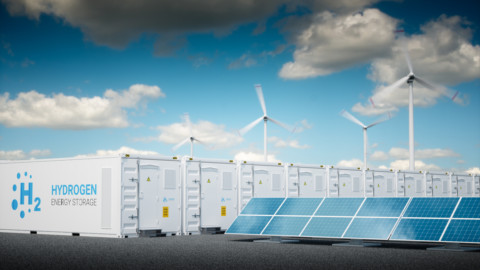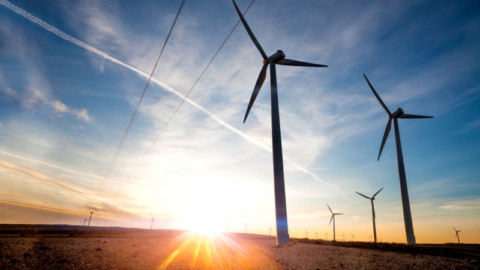By Agnes King
Energy experts call for urgent action and intervention to encourage investment to stabilise the grid as coal exits the system.
As Australian Energy Week approaches, we spoke to Blair Comley and took and overview of issues for the generation sector, focussing on the speakers in the ‘Generation 2.0’ stream, including
- Ian Brooksbank, Chief Executive Officer, Hydro Tasmania
- Markus Brokhof, Chief Operating Officer, AGL Energy
- Blair Comley, Net Zero Centre Leader, EY Port Jackson Partners
- Monique Miller, Chief Investment Officer, Renewables and Sustainable Finance, Clean Energy Finance Corporation (CEFC)
New market arrangements and government intervention are urgently needed to de-risk investments in firming and storage technologies to stave off blackouts as coal-fired power stations withdraw from the system, EY’s Net Zero Centre head, Blair Comley, warns.
“Concrete steps need to be taken on this in the coming months, given long delivery timeframes and supply chain risks,” says Mr Comley, who is scheduled to speak at Australian Energy Week in June.
“Returns on investment in storage are strongly influenced by system-level generation mix and capacity utilisation, which is largely outside the control of the investor. Governments or market arrangements need to de-risk these investments and make them bankable,” he says.
Targeted subsidies
With inflation biting, subsidies are being wheeled out in states like New South Wales to reduce cost of living pressures, including on power bills, which are set to rise by more than 20 per cent across eastern states from July.
Mr Comley cautions against the overuse of blanket subsidies to ease the pain and cost of the energy transition.
They can be difficult to wind back and often contribute to increased consumption, which is generally counterproductive, he says.
“A more constructive approach would be to ramp up efforts on supporting households to reduce their emissions and bills with energy-efficient appliances and insulation,” Mr Comely says.
This should include support for landlords, particularly for affordable or lower-cost rental accommodation, he adds.
Positive market signals
Market confidence in new investment has been bolstered by the Albanese government’s aggressive emissions reduction target and national Rewiring the Nation program, according to the Clean Energy Finance Corporation’s Chief Investment Officer for Renewables and Sustainable Finance. Monique Miller.
“There is no question that the scale of the investment task – and opportunity – is of nation building proportions, and we’re seeing momentum building from investors, developers, regulators and local communities,” Ms Miller says.
However, it is not yet clear whether the pace and scale of investment will be enough to achieve the required energy transition in what is a relatively short time frame, she says.
Large-scale solar is still a relatively new energy sector and participants have experienced a range of challenges including locking in long-term power purchase agreements to underpin revenues, securing appropriate financing models, early mover learnings in construction, and connection issues.
CEFC analysis indicates that approximately $100 billion in new investment is needed over the next two decades to finance the required new solar, wind, transmission, storage, and ancillary services to achieve net zero emissions by 2050.
This underscores the important role of the CEFC as a counter-cyclical investor, Ms Miller says.
Regional jobs
Much of the focus in the energy transition is centred around the preservation or development of jobs and economic opportunities in rural and regional areas.
In an interview last year, Hydro Tasmania Chief Executive, Ian Brooksbank, expressed a sense of optimism about the strong ongoing government support at state and federal levels, recognising the importance that hydropower projects will play in Australia’s clean energy future and decarbonisation ambitions.
Progressing Hydro Tasmania’s Battery of the Nation ambitions to take advantage of the market opportunities for Tasmania created by the new 1500MW Marinus Link interconnector is a top priority for Brooksbank.
More interconnection unlocks the potential of Tasmania’s significant hydropower resources, which is particularly important when the grid is transitioning to a variable renewable future, Brooksbank told Energy Source & Distribution.
AGL, meanwhile, is navigating the skills transition at a very granular level. Speaking to The Australian in February, AGL Chief Operating Officer, Markus Brokhof, touched on the challenge of trying to get its existing workforce at soon-to-be-retired coal-fired power plants in New South Wales and Victoria signed on to a new vision to convert these sites into major energy hubs spanning hydrogen through to batteries.
Not everyone is enamoured with the shift. But AGL continues to try to bring along its ageing workforce and attract younger talent with the promise of a new industry for these regions.
Hear from Ian Brooksbank, Markus Brokhof, Blair Comley, Monique Miller and a host of energy leaders in the Generation 2.0 stream at Australian Energy Week.
Register for your ticket at: https://www.energyweek.com.au/registration
Energy Magazine is a Media Partner of the Australian Energy Week Conference.
















